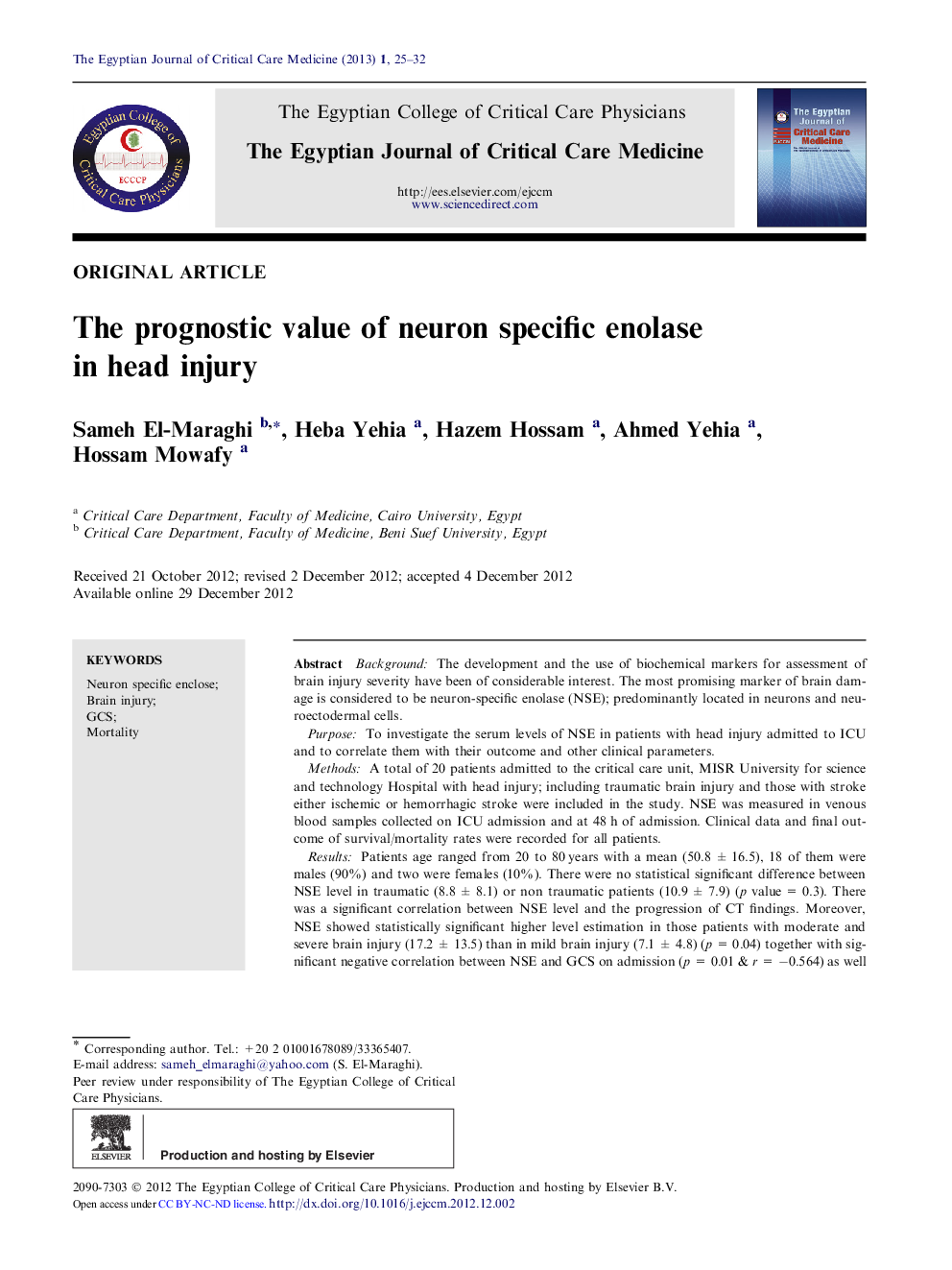| Article ID | Journal | Published Year | Pages | File Type |
|---|---|---|---|---|
| 2910927 | The Egyptian Journal of Critical Care Medicine | 2013 | 8 Pages |
BackgroundThe development and the use of biochemical markers for assessment of brain injury severity have been of considerable interest. The most promising marker of brain damage is considered to be neuron-specific enolase (NSE); predominantly located in neurons and neuroectodermal cells.PurposeTo investigate the serum levels of NSE in patients with head injury admitted to ICU and to correlate them with their outcome and other clinical parameters.MethodsA total of 20 patients admitted to the critical care unit, MISR University for science and technology Hospital with head injury; including traumatic brain injury and those with stroke either ischemic or hemorrhagic stroke were included in the study. NSE was measured in venous blood samples collected on ICU admission and at 48 h of admission. Clinical data and final outcome of survival/mortality rates were recorded for all patients.ResultsPatients age ranged from 20 to 80 years with a mean (50.8 ± 16.5), 18 of them were males (90%) and two were females (10%). There were no statistical significant difference between NSE level in traumatic (8.8 ± 8.1) or non traumatic patients (10.9 ± 7.9) (p value = 0.3). There was a significant correlation between NSE level and the progression of CT findings. Moreover, NSE showed statistically significant higher level estimation in those patients with moderate and severe brain injury (17.2 ± 13.5) than in mild brain injury (7.1 ± 4.8) (p = 0.04) together with significant negative correlation between NSE and GCS on admission (p = 0.01 & r = −0.564) as well as the changes in GCS assessment after 48 h. Upon estimating the prognostic role of NSE and its ability in detecting outcome; NSE was significantly higher in non survivors (20 ± 14) than in survivors (8.9 ± 6.7) (p < 0.05). Also, it was significantly higher in those with bad outcome (severe disability) than those who recover or with mild disability (p < 0.05). By statistical analysis; an optimal cutoff value of NSE level of 18 μg/L was determined to predict ICU mortality and 7.9 μg/L to predict bad outcome with a high sensitivity and specificity.ConclusionNeuron specific enclose can be used as a potentially useful marker for brain damage and can be considered to be a relevant parameter for assessing the prognosis of brain injury.
